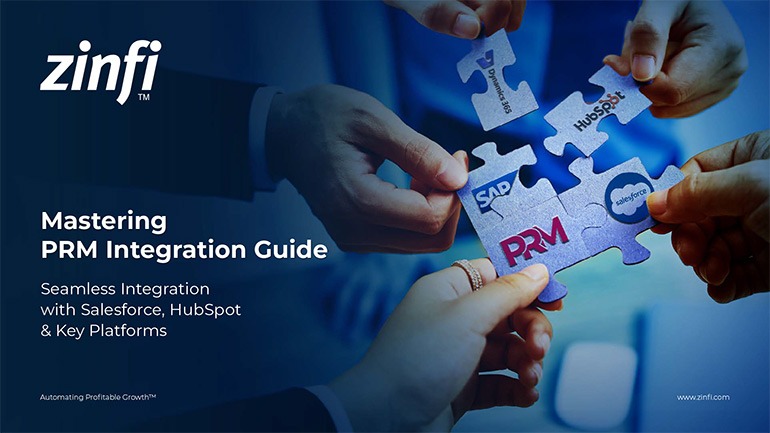Glossary - How to - Co-op Program
How to Build a Successful Co-op Program?
Introduction
A Co-op Program, or cooperative marketing program, is a strategic initiative where two or more businesses collaborate to promote a product, service, or brand. This marketing approach allows companies to share resources, such as advertising budgets, distribution networks, and promotional efforts, to achieve mutual benefits. Suppliers and resellers in retail, consumer electronics, and automotive manufacturing commonly collaborate in co-op programs to boost sales.
A well-structured co-op program enhances collaboration between vendors and their partners in Partner Relationship Management (PRM). When integrated into a PRM system, co-op marketing becomes more streamlined, ensuring that partners can access funding, track campaigns, and measure performance effectively. As companies seek to maximize their marketing investments, co-op programs are a cost-efficient solution to drive growth and brand awareness.
Key Takeaways:
- Define Clear Goals and Objectives: Before launching a co-op program, businesses must outline specific goals such as increasing brand visibility, driving lead generation, or boosting sales conversions. Clearly defined objectives help design a structured program that aligns with the vendor’s and partner’s expectations.
- Identify key performance indicators (KPIs) for tracking success.
- Align marketing efforts with business objectives to ensure mutual benefits.
- Communicate expectations to partners to avoid misalignment.
- Establish Funding and Budget Allocation: A successful co-op program requires a well-defined budget structure. Vendors typically offer funding to partners based on sales volume, marketing activities, or predefined contribution models.
- Determine whether funding will be fixed, tier-based, or performance-driven.
- Set clear reimbursement guidelines and approval processes.
- Use a PRM platform to automate budget tracking and claim submission.
- Implement an Easy-to-Use Claim and Reimbursement Process: The co-op claim process should be simple and transparent so that partners can participate actively. Complicated or delayed reimbursements often deter participation.
- Use a PRM system to automate claim approvals and disbursements.
- Provide partners with a structured template for submitting marketing expenses.
- Ensure compliance with program guidelines to avoid fraudulent claims.
- Offering Comprehensive Training and Marketing Support: Many partners may lack the expertise to execute high-quality marketing campaigns. Providing adequate training and resources helps ensure the success of the co-op program.
- Develop an online learning portal with tutorials, templates, and guidelines.
- Offer marketing toolkits that include pre-approved ads, banners, and content.
- Assign dedicated account managers to support partners throughout the campaign cycle.
- Track Performance and Optimize Campaigns: Monitoring and optimizing marketing efforts are crucial to maximize ROI. Businesses should leverage data analytics to assess which strategies yield the best results.
- Use analytics tools to measure campaign effectiveness.
- Conduct periodic reviews and adjust the program based on performance insights.
- Collect feedback from partners to refine future co-op initiatives.
Summary of Key Takeaways:
Building a successful co-op program requires clear goals, structured funding, a seamless reimbursement process, ongoing training, and robust performance tracking. By leveraging PRM technology, businesses can streamline co-op marketing, foster partner engagement, and enhance ROI.
Key Examples:
- Automotive Manufacturing: In the automotive sector, co-op programs enable manufacturers to support dealerships in local advertising. Car brands give funds for digital campaigns, TV ads, and showroom promotions.
- Consumer Electronics: Retailers benefit from co-op marketing funds from electronics manufacturers to promote products through online advertising and in-store displays.
- Energy Production: Renewable energy companies collaborate with distributors and installers to co-market solar panels, wind turbines, and other energy-efficient solutions.
- Financial Services: Banks and insurance companies partner with brokers and agents to create co-branded campaigns for acquiring new customers.
- Food and Beverages: Franchises and suppliers work together on promotional deals, seasonal advertising, and social media campaigns to attract more customers.
- Healthcare Services: Medical device manufacturers offer marketing funds to hospitals and clinics to promote new healthcare technologies and treatment options.
- Information Technology: Software vendors and IT resellers co-invest in digital marketing, webinars, and content marketing to drive software sales and adoption.
- Pharmaceutical Development: Pharma companies collaborate with healthcare providers to co-market prescription drugs, leveraging educational content and compliance-approved ads.
- Retail Industry: Brands and retailers use co-op advertising for special promotions, holiday campaigns, and exclusive product launches.
- Telecommunications: Mobile carriers and smartphone manufacturers run co-op programs to fund advertising for new device releases and network service plans.
Conclusion:
A well-executed co-op program strengthens partnerships, optimizes marketing spend, and enhances brand visibility. By integrating PRM technology, businesses can automate funding allocation, streamline claims, and track performance efficiently. Whether in retail, technology, or healthcare, co-op marketing remains a powerful strategy to achieve mutual success.
Associated Keywords:















